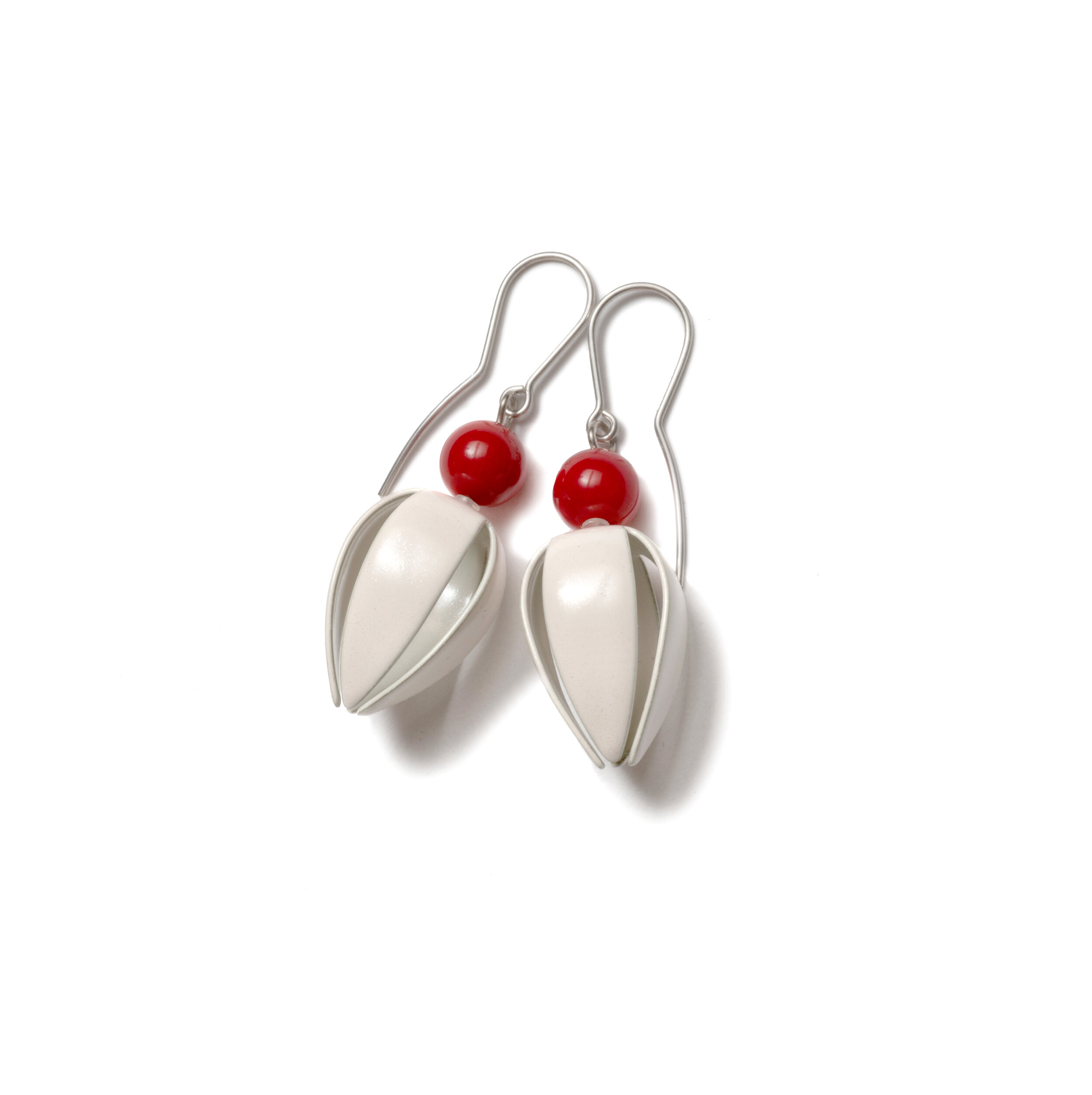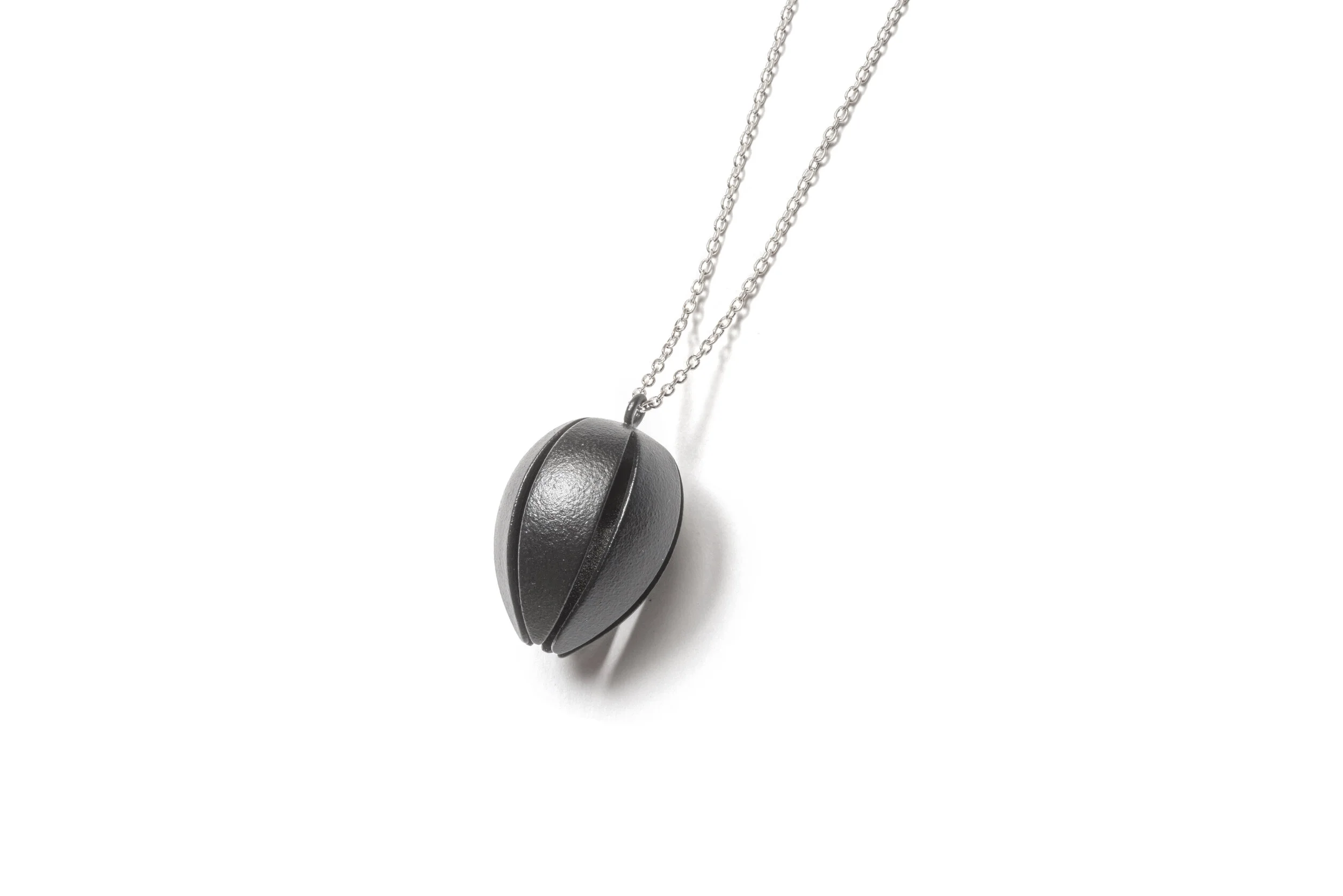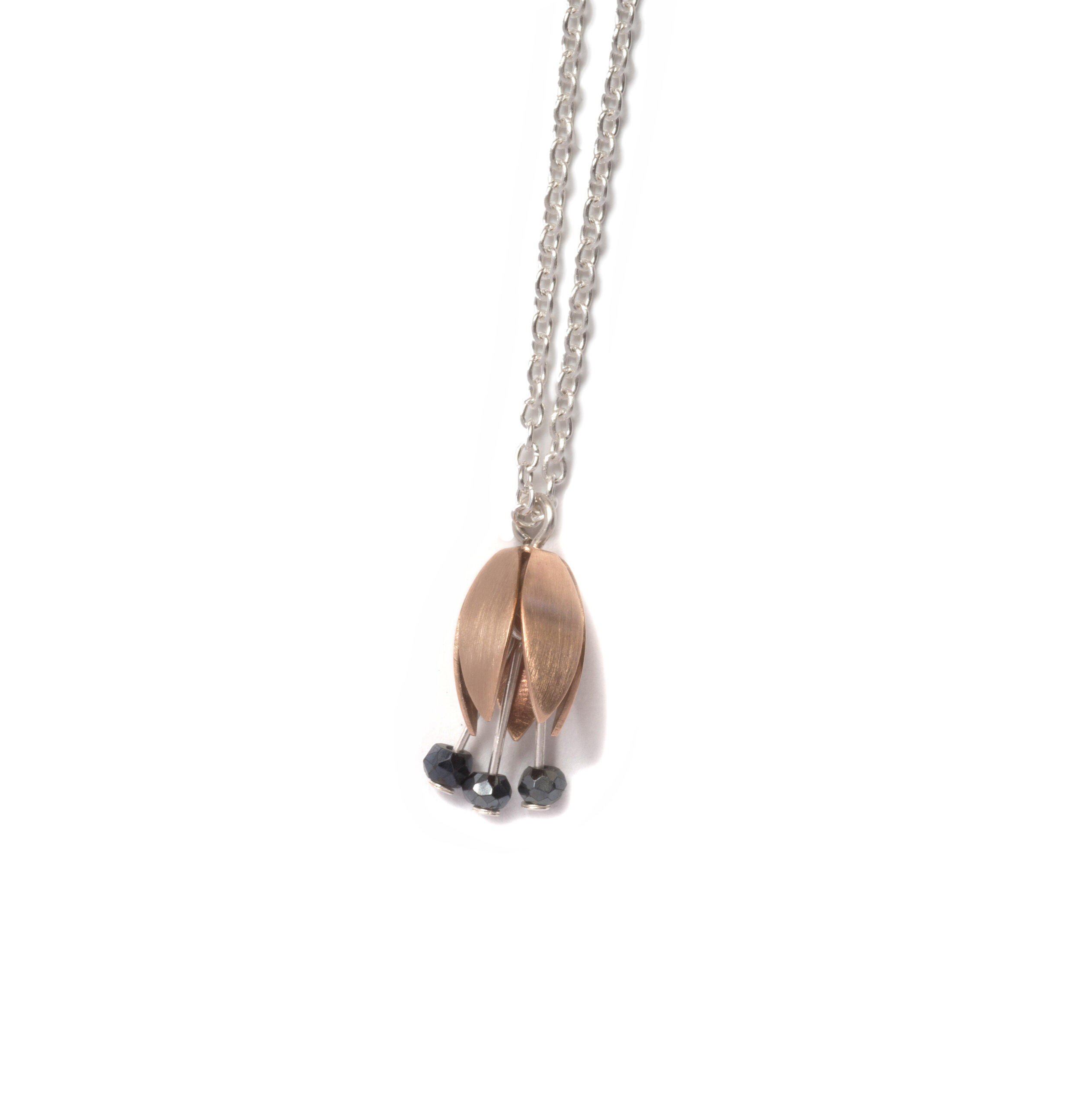Flowerets Collection
Australian indigenous flowers — correa, boronia, crowea and heath collection









Inspired by Australia’s very small correa, boronia, crowea and heath flowers many in their pre bloom floweret form this new range draws attention to these often-overlooked tiny flowers. Some jewels are unique hybrid forms where elements from one flower are melded with other flower forms to create new quirky offspring.
This crossing mimics the hybridisation of plants that happens in the horticultural world as new hardier and more pest resistant species with often more beautiful or colourful blooms are created. Vicki’s ongoing research into Australian native plants suitable for use in residential gardens led her to discovering these species. She encourages us to plant a greater variety of indigenous plant species in our gardens as this means more food and a more diverse habitat for native wildlife in our highly urbanised landscape. The three-dimensional bud, tube and bell-shaped forms of these native Australian flowers made in various metals are combined with beautiful gems both semi-precious and precious and give voice to these small, quiet but strong Australian indigenous flowers. Australia’s correa genus of flowering plants consists of 11 species and over 26 subspecies and is named after the Portuguese botanist Correia de Serra. Correa’s are generally easy to grow and hardy and are characterised by bell shaped flower forms. Perfect as shrubbery plants they attract wildlife to the garden. Australia’s boronia and crowea species are part of the citrus family – Rutaceae. This genus is characterised by the presence of oils in the plant’s flowers and foliage. Both are grown for cut flowers and are suitable specimens for growing in the garden. Crowea’s have five petals while most boronias have four. There are 160 species in the boronia genus while the evergreen crowea has only three species but many subspecies and cultivars. Most Australian heaths grow in forest, woodland, heathlands and shrublands but adapt well to domestic gardens as they are tough, and they are popular as they flower for a long time. These are bird attracting plants that grow in most Australian states, so it’s easy to find one suitable for planting where you live.